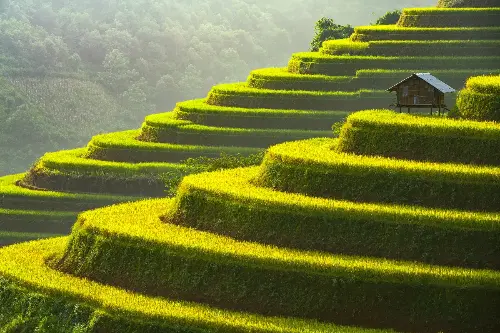When we consider the grandeur of Earth's diverse landscapes, from the majestic peaks of the Himalayas to the vast expanse of the Grand Canyon, we are often humbled by the sheer scale and beauty. Yet, beyond their aesthetic allure lies a story of immense natural forces that have shaped every valley, mountain, and plain we set our eyes upon.
The process begins deep within Earth's crust, where the tectonic plates, vast slabs of solid rock, constantly move and interact. Where these plates collide, the ground is forced upwards, creating mountain ranges such as the Andes or the Rockies. When they move apart, it can result in the creation of new ocean floor or the rift valleys so iconic of East Africa. Meanwhile, volcanic activity, a byproduct of these immense geological shifts, can either destroy or create landscapes, leaving behind rich soils and unique topographies like those found on the Hawaiian Islands.

Erosion and Weathering: Sculpting Earth's Face
Erosion and weathering, though less dramatic, are relentless forces that shape the earth in equally profound ways. Water, wind, and ice carve and whittle away at the rock over millennia. These are the patient sculptors of nature, responsible for serpentine river valleys, stark desert landscapes, and the steep gorges that leave onlookers breathless. The Grand Canyon is a testament to the power of water erosion, revealing a billion-year geological timeline within its striated walls.
Glaciers deserve a special mention for their role in moulding landscapes. During the last ice age, glaciers advanced and retreated, scraping the land beneath them and leaving behind moraines, drumlins, and kettle lakes. The fjords of Norway and the great lakes of North America stand as grand monuments to the glacial craftsman.
The Crucible of Life: Biodiversity and Topography
The terrain also plays an intimate role in biodiversity. Distinct landscapes give rise to unique ecosystems by providing diverse habitats. The Amazon Rainforest thrives in the basin shaped by the Andes' rise, while the steep cliffs of Madagascar have given shelter to species found nowhere else on the planet.

Humanity's Hand in the Tapestry of Terra
While nature's power has been the principal architect, we cannot overlook humanity's influence on the landscapes. Our terraces, dams, and urban sprawl have become a part of the geological narrative. Sometimes this synergises with the surroundings, like with the rice terraces of the Philippines, and other times it becomes a cautionary tale of natural balance disrupted, such as the shrinking of the Aral Sea.
As we strive to coexist with the natural world, it's crucial to understand the forces that shape it. Respecting and acknowledging the immense power of Earth's geological processes not only informs better stewardship of our planet but also deepens our appreciation for the breathtaking vistas we often take for granted.
Climate Change: A New Chapter in Earth's Story
The impact of climate change on these natural phenomena adds a sobering twist to the tale. Melting glaciers, rising sea levels, and shifting weather patterns are redefining landscapes at an unprecedented rate. This serves as a stark reminder that while the forces of nature have been shaping our planet for billions of years, human activity over just a few centuries is now influencing those processes in profound ways.
Delving into the Earth's layered landscapes is akin to leafing through the pages of a dynamic history book, each stratum marking a different epoch, each fossil telling a story of survival and evolution. To witness these wonders is to journey deep into geologic time and come face to face with the many chapters of our planet's past.
Understanding the forces that shape our world is not just an academic exercise; it's a journey into the very history of Earth itself. As we explore and learn, we uncover the fascinating interconnections between the geologic activity and the environment we inhabit today.
